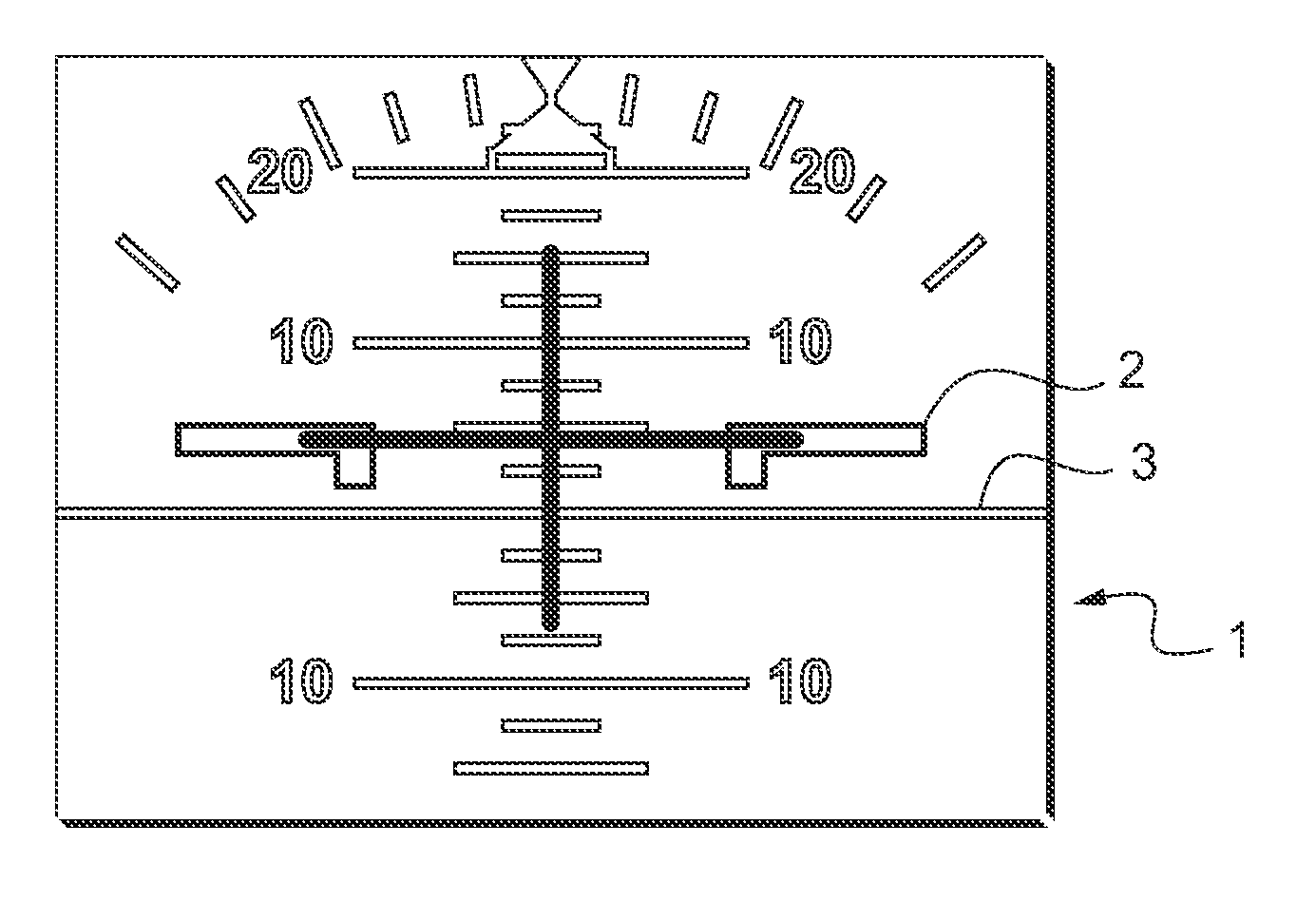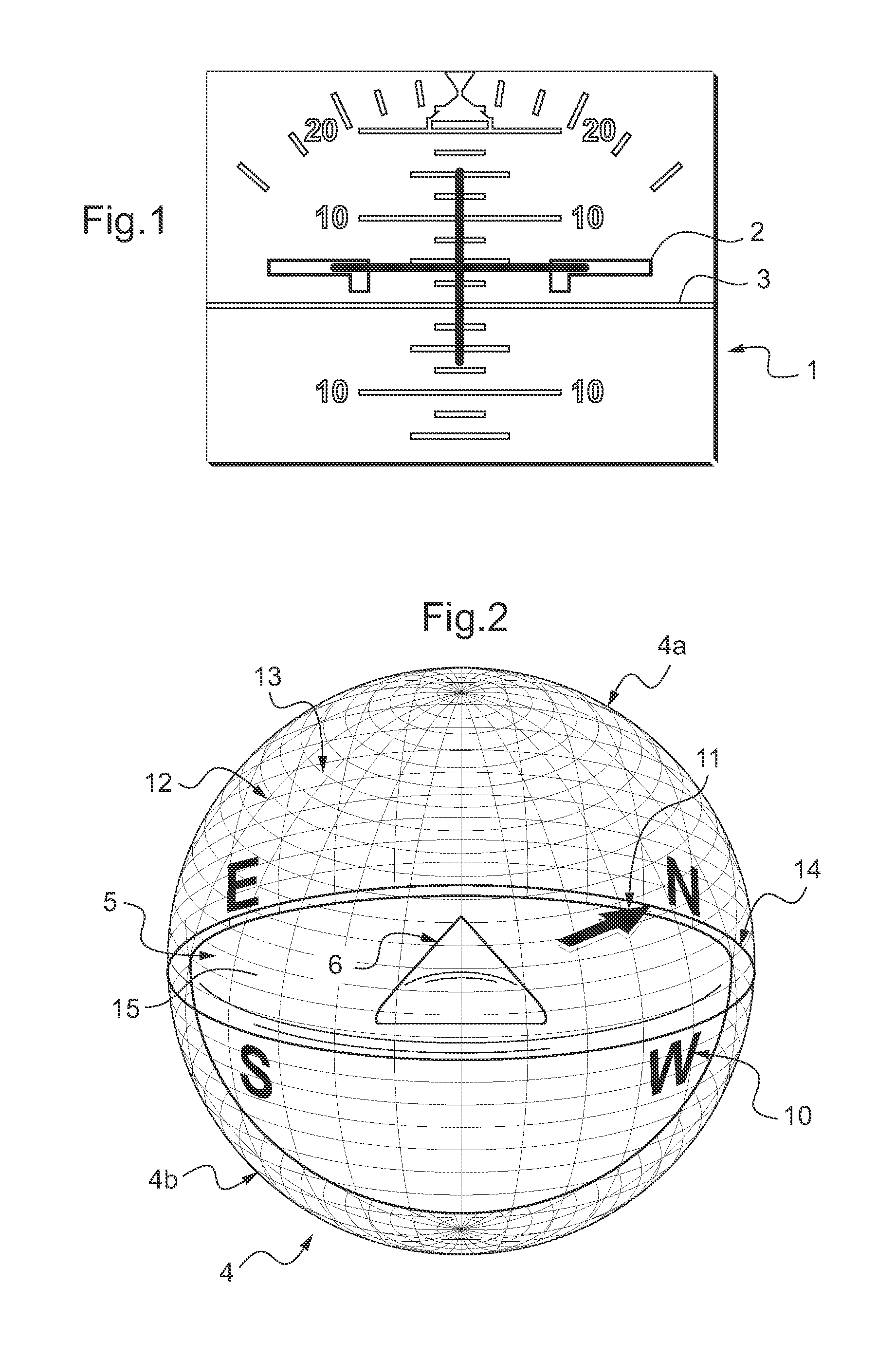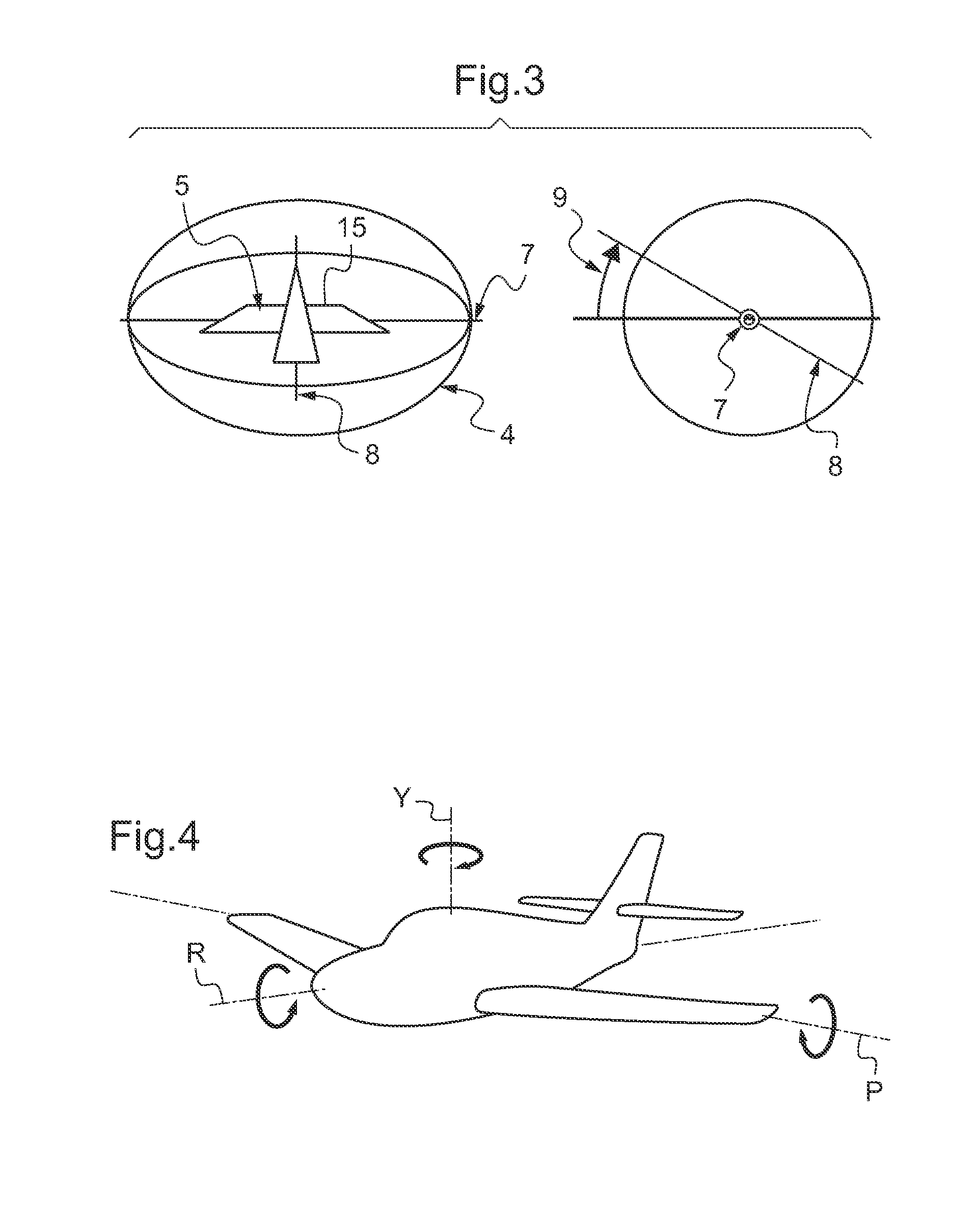Method for presenting spatial attitude and heading information of a vehicle
a technology of heading information and attitude, applied in the field of flight guidance equipment, can solve the problems of not being able to easily know in which direction he should steer to get a normal flight attitude, not being able to provide instantaneous situation awareness, and not being able to provide actual attitude or directions to correct attitude, etc., to achieve the effect of improving awareness situation and improving safety
- Summary
- Abstract
- Description
- Claims
- Application Information
AI Technical Summary
Benefits of technology
Problems solved by technology
Method used
Image
Examples
Embodiment Construction
[0072]The identical structural and functional elements, which are shown in several different figures or illustrations, are given one single numeric or alphanumeric reference.
[0073]In FIG. 1, an artificial spatial attitude indicator 1 of the state of the art comprises a fixed aircraft symbol 2 a horizon 3. As depicted in FIG. 1, the available field of view is approximately + / −20°. This leads to a loss of information as soon as the flight attitude is above or below this value. Especially if this situation is combined with a roll motion, a spatial disorientation can easily occur. Additional guidance needs to be introduced to overcome this problem. This would require intensive training for crew to undertake quickly the necessary flight corrections.
[0074]According to the invention, the artificial spatial attitude and heading indicator for a vehicle such as an aircraft or a spacecraft, comprising a 2D display, an inertial reference system, a computer and a graphical software or a graphic ...
PUM
 Login to View More
Login to View More Abstract
Description
Claims
Application Information
 Login to View More
Login to View More - R&D
- Intellectual Property
- Life Sciences
- Materials
- Tech Scout
- Unparalleled Data Quality
- Higher Quality Content
- 60% Fewer Hallucinations
Browse by: Latest US Patents, China's latest patents, Technical Efficacy Thesaurus, Application Domain, Technology Topic, Popular Technical Reports.
© 2025 PatSnap. All rights reserved.Legal|Privacy policy|Modern Slavery Act Transparency Statement|Sitemap|About US| Contact US: help@patsnap.com



